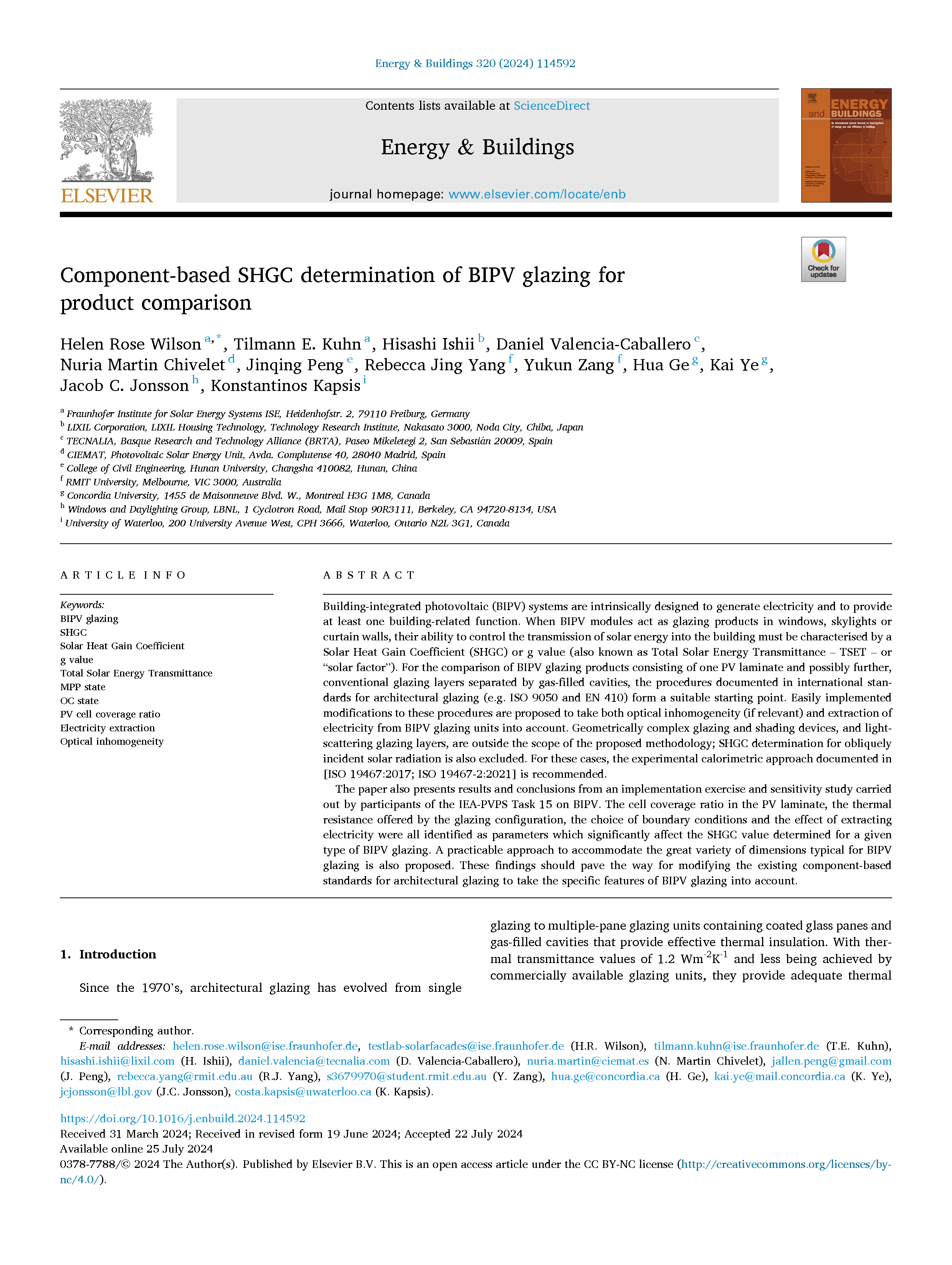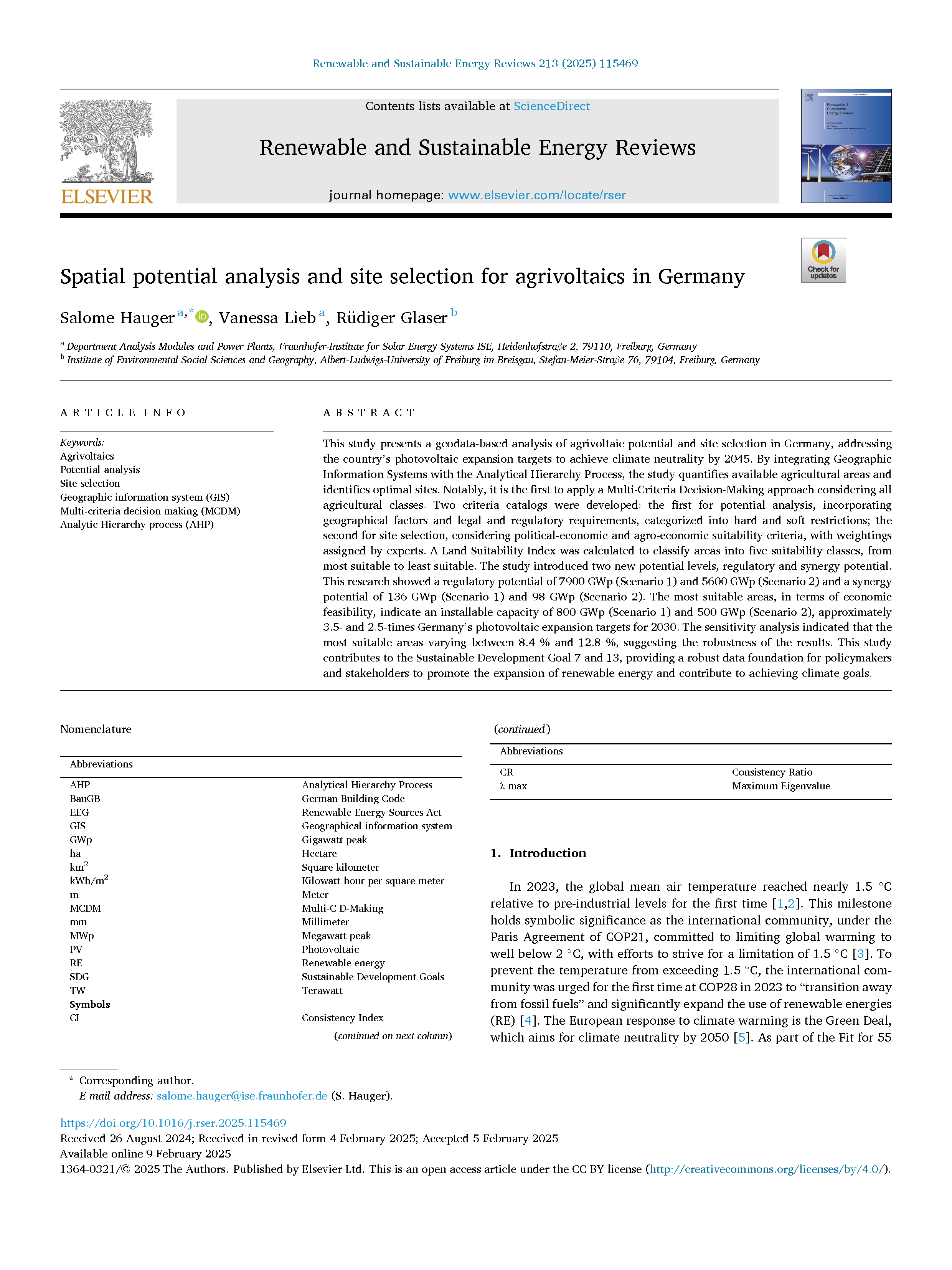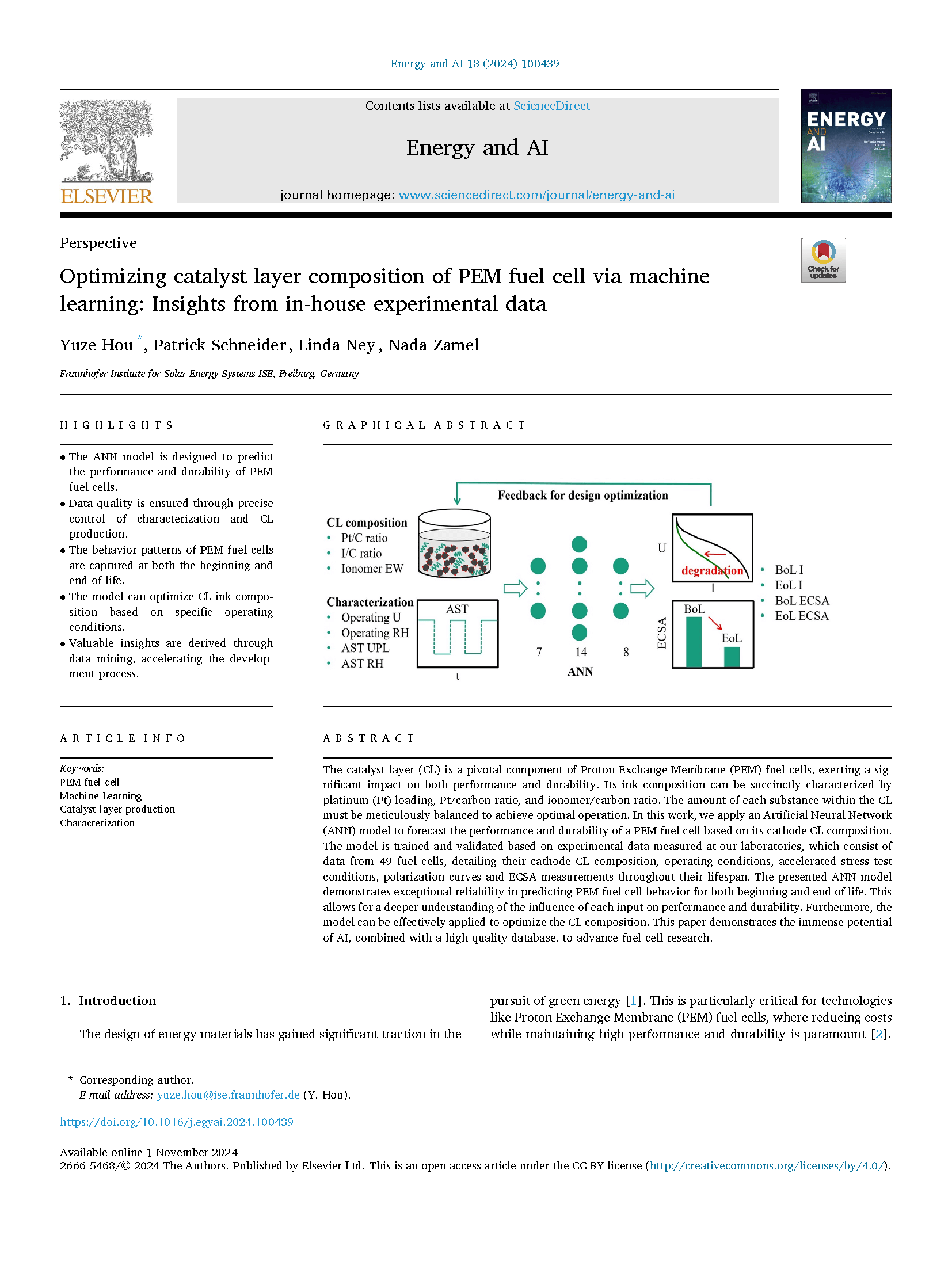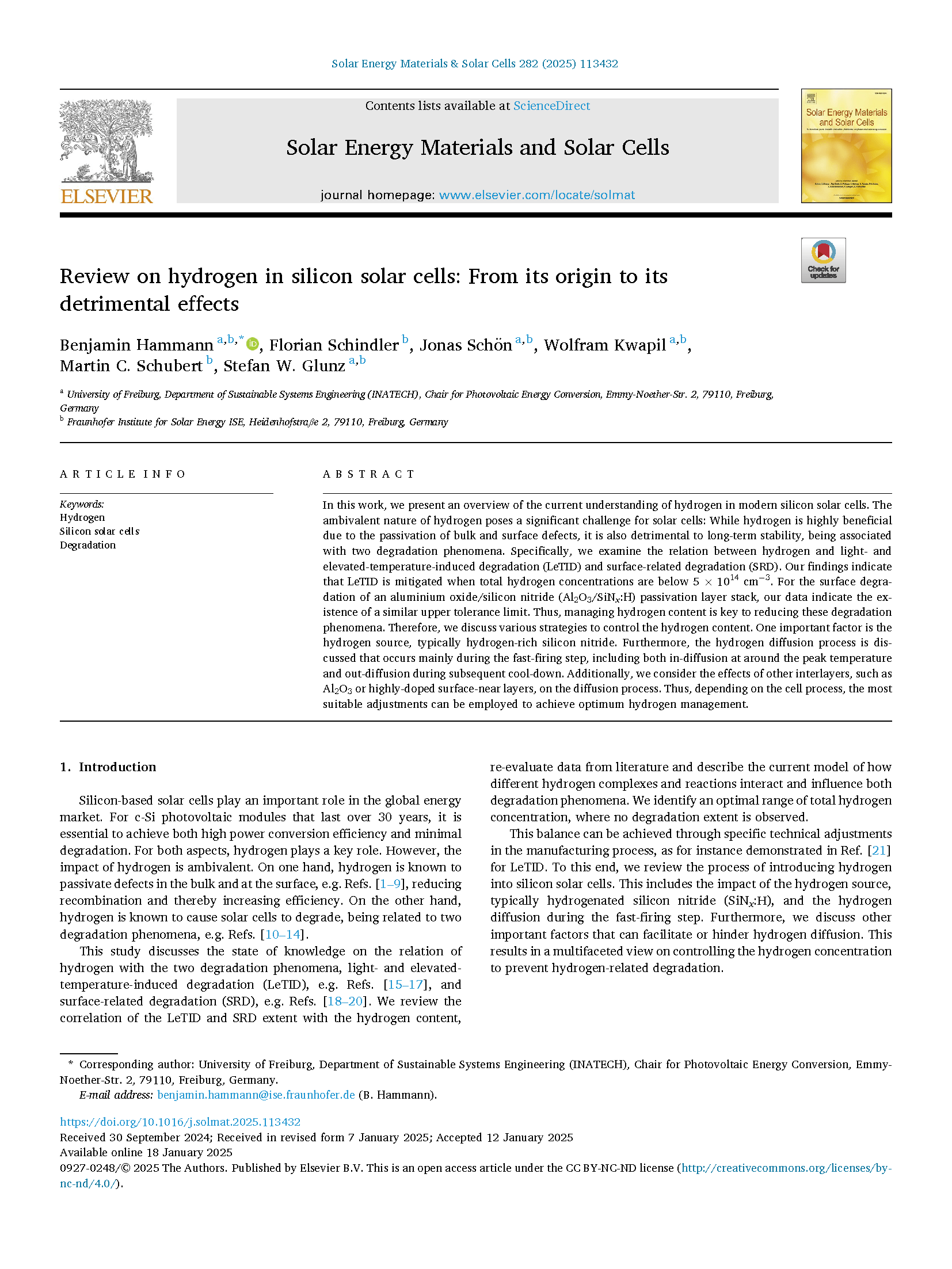Energy and Buildings | Volume 320 | 1 October 2024 | 114592
Helen Rose Wilson, Tilmann E. Kuhn, Hisashi Ishii, Daniel Valencia-Caballero, Nuria Martin Chivelet, Jinqing Peng, Rebecca Jing Yang, Yukun Zang, Hua Ge, Kai Ye, Jacob C. Jonsson, Konstantinos Kapsis
The Solar Heat Gain Coefficient (SHGC) typically quantifies the proportion of incident solar radiation that is transmitted – directly or indirectly – through building envelope components into the interior of the building. There is a need to modify it for building-integrated photovoltaics (BIPV) because photovoltaic power generation reduces the amount of absorbed solar energy that would otherwise be transferred as heat into indoor spaces.
“Understanding this effect is essential for optimizing energy efficiency in buildings, reducing cooling demand, and supporting the broader adoption of BIPV solutions,” said the authors.
BIPV systems are intrinsically designed to generate electricity and to provide at least one building-related function. When BIPV modules act as glazing products in windows, skylights or curtain walls, their ability to control the transmission of solar energy into the building must be characterised by a Solar Heat Gain Coefficient (SHGC) or g value (also known as Total Solar Energy Transmittance – TSET – or “solar factor”). For the comparison of BIPV glazing products consisting of one PV laminate and possibly further, conventional glazing layers separated by gas-filled cavities, the procedures documented in international standards to determine the SHGC for architectural glazing (e.g. ISO 9050 and EN 410) form a suitable starting point. Easily implemented modifications to these procedures are proposed in the paper to take both optical inhomogeneity due to the combination of PV cells and transparent areas, and extraction of electricity from BIPV glazing units, into account. The basic approach is to calculate the SHGC of the BIPV glazing unit from the optical and thermal properties of its components and the photovoltaic conversion efficiency of the PV module.
The paper also presents results and conclusions from an implementation exercise and sensitivity study carried out by participants of the IEA-PVPS Task 15 on BIPV. The cell coverage ratio in the PV laminate, the thermal resistance offered by the glazing configuration, the choice of boundary conditions and the effect of extracting electricity were all identified as parameters which significantly affect the SHGC value determined for a given type of BIPV glazing. A practicable approach to accommodate the great variety of dimensions typical for BIPV glazing is also proposed.
Based on the findings reported in the paper, a new Annex to take the specific features of BIPV glazing into account has been included in the current revision of EN 410, the existing component-based European standard for architectural glazing. The revised version of EN 410 with the new BIPV Annex should be published in 2026. It is expected that the next revision of the equivalent international standard, ISO 9050, will also include a BIPV Annex based on the work reported in the paper.



